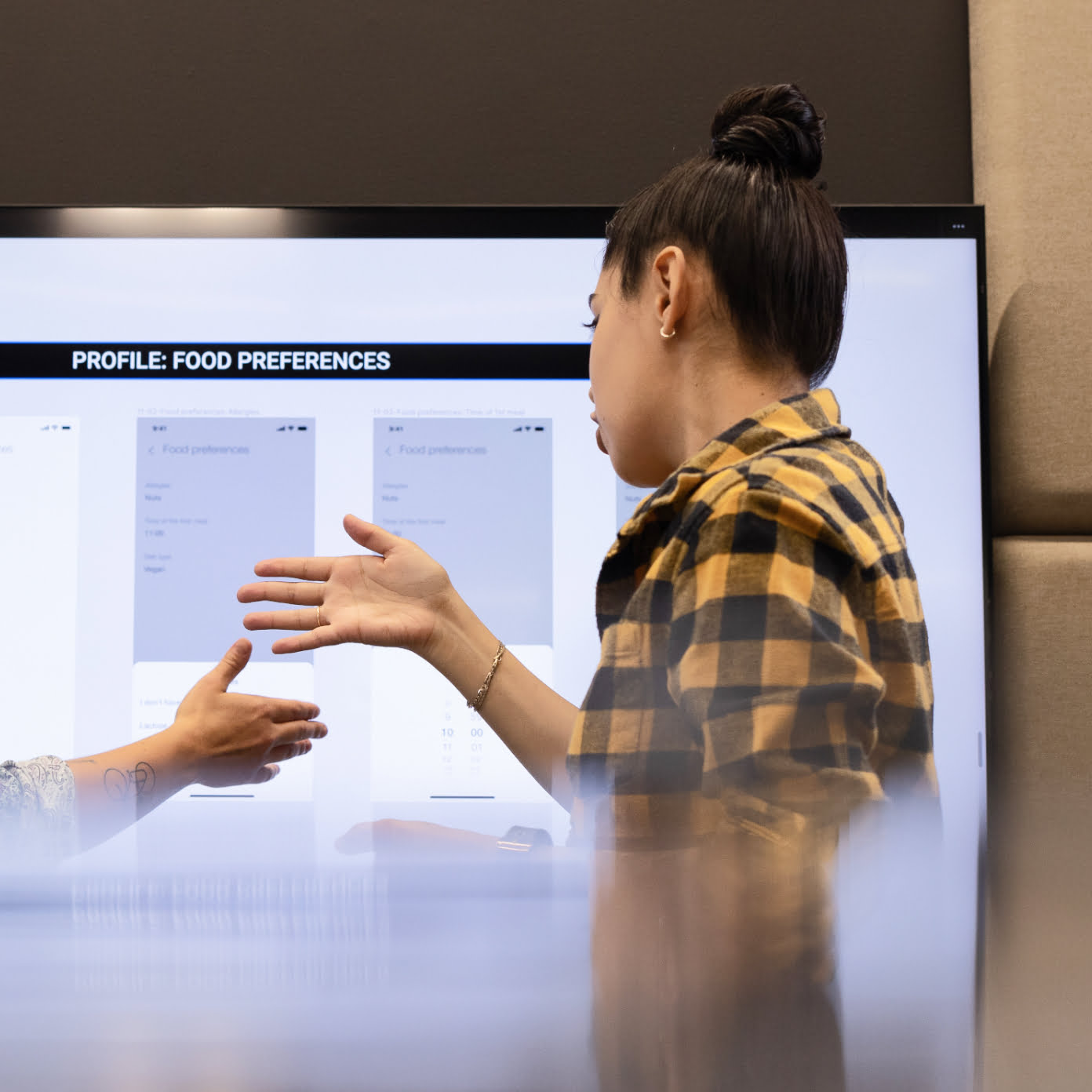Get insights to craft audience-fit products

Optimizing product
development at every stage is
the best way to meet audience’s
needs. We do that with UX
research.
Your new digital product has to deliver value to the users. The truth is, you need to give your audience a tailored-to-needs solution that is intuitive, friendly, and effective. Hey, we are sure you have a great idea, we just want to help you translate it to the best-case scenario in the market. Look, at the end of the day, it’s about human engagement. Designing an exceptional user experience is not a walk in the park. You know why Apple or Google are the top players? Because they anticipate that human engagement by leveraging UX research data. But worry not, we know how to conduct UX research and get that data for you.


What is it exactly?
User experience is about human interaction with a product or service. This means it involves everything of what happens before, during, and after that interaction. UX research is briefly a way of gathering detailed information from users through both qualitative and quantitative means. What are these ways? Well, these include discovery interviews, concept testing and usability testing sessions – anything that helps get as many insights as possible to create a product that is the best user-fit option. To put it simple – you need to know what your target audience needs. And we can extract that knowledge through UX research.
Why do you need it?
You dream of high conversion rates and skyrocketing ROI, don’t you? That is why you invest in turning your vision into an impactful digital product. So, knowing the needs of your target audience is crucial for making your dreams come true. It’s easy – if you don’t meet users’ needs, your product will fail. If you conduct UX research, you have much higher chance to be successful on the market. According to a study by Forrester, a frictionless UX design can boost the conversion rates up to 400%! So, it’s definitely worth to use UX research, right?
Why do you need it?
Understand users
And their behaviors
Uncover pain points
To address requirements
Reduce expenses
And shorten time-to-market
Improve retention
And secure users’ loyalty
Key methods of
UX research
Components
Description
Contextual interviews
This way is a combination of observation and interviews. Users work in their natural environment – this provides an opportunity to see how customers behave in reality. Usually, there are no given tasks or pre-defined scenarios; however, researches may implement these – if needed. Depending on the mentioned, this method provides both qualitative (observed data) and quantitative (measured data) results – in various proportions. Anyway, it’s invaluable to see how users interact with the product and how they behave – before the release.
Focus groups
This is one of the most traditional methods – it involves a discussion within a small group (typically up to 10 participants). Even though it looks similar to contextual interviews, it’s very different. In this method, the users tell about their experiences or expectations, but the researchers don’t verify these ‘in action’. There is a moderator who can change the scenario in order to keep the conversation run smoothly. What is unique, is that we don’t pick random people – we identify your target audience personas and choose participants from that pool.
Heuristic evaluation
How many times did you abandon an app or switch to another website due to poor experience? Well, you don’t want that to happen with your product, do you? Well, that’s what heuristic evaluation is for – to identify a product’s common usability issues and improve users’ satisfaction. Keep in mind that it’s not a cognitive walkthrough or analysis performed by random users. It’s performed by experts who have in-depth understanding of the chosen set of heuristics. This method works best after wireframing and prototyping and before visual design and UI development.
Use cases
This method provides a description of how people use a particular feature – in terms of accomplishing a sequence of simple steps to achieve the predefined goal. It’s not the same as contextual interview, as use case outlines – from a user’s perspective — a system’s behavior as it responds to a request. The value of this method is to help explain how the system should behave, as well as to identify what could go wrong in the process. What use case does not provide? Details about UI or implementation-specific language. Use cases can be simple or complex – it all depends on the project.
Prototyping
This one helps save money – before you invest in the development process. Different types of prototypes are in use – namely, low-fidelity (paper-based) and high-fidelity (computer-based). Both of these are super-useful, as they allow the design team to explore the ideas and find usability issues, before the serious work starts. You know, it’s like finding out what can be done and what works (or doesn’t) before coding magic is happening.


What you’ll get?
First, and foremost, you will get an opportunity to save money and time from the very start. Making changes during the development process is expensive, so it’s way smarter to validate ideas and explore possibilities beforehand. You will also get tons of invaluable information – both measurable and not-measurable. With a plethora of UX research tools and methods, these can be performed basically at any stage of the development – and it will always pay off to use them.
After all, it’s about the success of your new product and boosting the ROI at the end of the day. UX research is here to ensure your target audience will love the experience of interacting with your game-changer.
